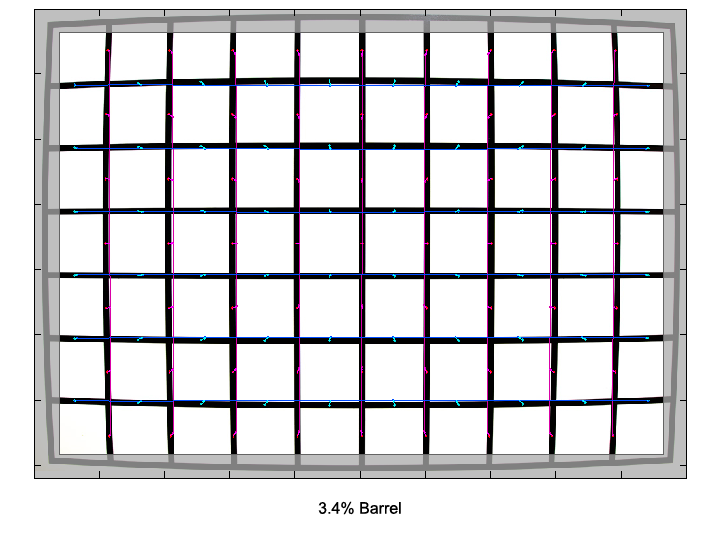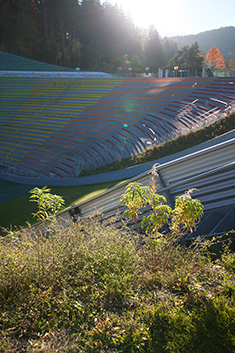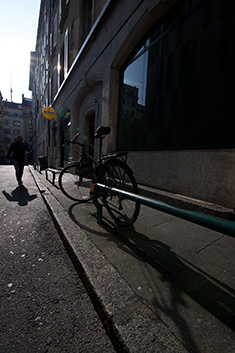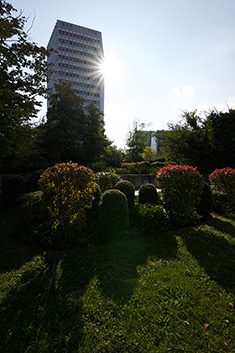|
Page 2 of 3

Distortion
The Tamron shows quite typical behaviour in terms of distortion. At the wide end, there is fairly pronounced barrel distortion, which eases significantly with longer focal lengths. At 21mm, there is hardly any distortion left. Zooming in further leads to pincushion type distortion of around 1% at 24mm and 1.2% at 30mm.
At all focal lengths distortion is symmetrical (and not wavy towards the corners as seen on some other UWA's) and thus fairly easy to correct in post processing, even without a dedicated lens correction profile.
|
Move the mouse cursor over the focal length text marks below to observe the respective distortion
|
| 15mm |
18mm |
21mm |
24mm |
30mm |
|

|
The chart above has a real-world size of about 120x80cm.
Vignetting
The Tamron shows a moderate amount of light fall-off towards the borders at larger apertures, which is (as to be expected) most pronounced at the shortest focal length. As usual, stopping down reduces the amount of vignetting considerably, but even when stopped down to f/11 there is some natural vignetting of roughly half a stop left. For most subjects, though, this is not an issue.
We're performing our vignetting analysis based on
(uncorrected) JPEGs straight from the camera. The JPG engine of the Nikon D3x features a rather flat
gradation curve, thus has a moderate contrast characteristic, resulting in comparatively low vignetting figures - the
corresponding Canon figures are roughly 40% higher due to the more
aggressive default contrast setting.

MTF (resolution)
The lens delivered very impressive results in our test lab. The center resolution is very good to excellent straight from the largest aperture setting and stays on an excellent level from f/4 onwards until diffraction kicks in at small apertures.
Borders and extreme corners follow slightly behind with good to very good resolution figures at f/2.8 and very good resolution at f/4 and beyond.
Please note that the MTF results are not directly comparable across the different systems!
Below is a simplified summary of the formal findings. The chart shows line widths
per picture height (LW/PH) which can be taken as a measure for sharpness.
If you want to know more about the MTF50 figures you may check out the corresponding
Imatest Explanations

Chromatic Aberrations (CAs)
Chromatic aberrations (color shadows at harsh contrast transitions) are well controlled and roughly around 1 pixel on average at the image borders throughout the zoom range, with slightly higher values at medium zoom settings.

Flare
The Tamron's main competitor (in Nikon land) is of course the Nikkor AF-S 14-24 - which is a terrific lens, but with one annoying issue: flare. So it's worth to have a look at how the Tamron behaves in this regard.
Well, it does flare - of course. Most lenses do. But the good news is that the Tamron (unlike the Nikkor) doesn't offer awkward surprises (like flaring when the sunlight is actually coming from slightly behind). Shooting into the sun or with the sun just outside of the frame there is a chance you might end up with some flare spots in the image, but in general the Tamron handles backlight and flare very well.
Below are 3 sample images that show how flare with the Tamron might look like in backlight conditions.
(Please click on the images to open a larger version in a new browser tab or window)



|